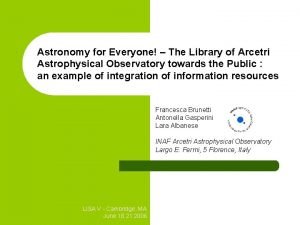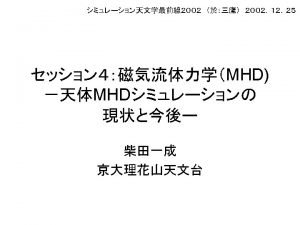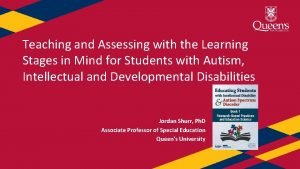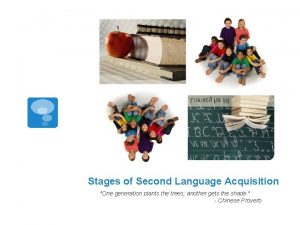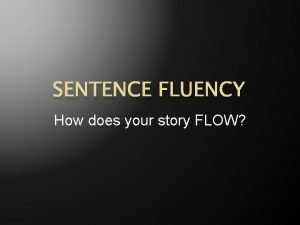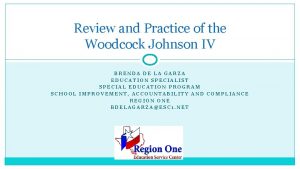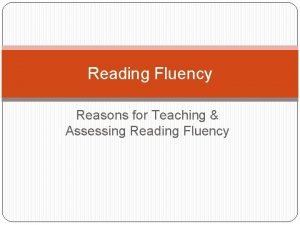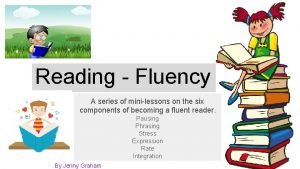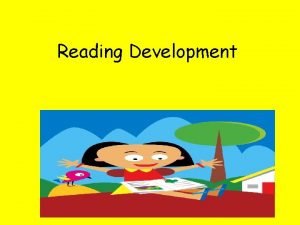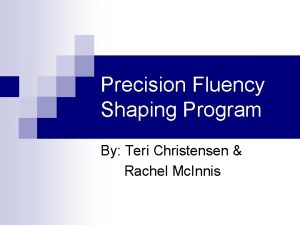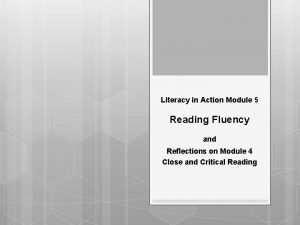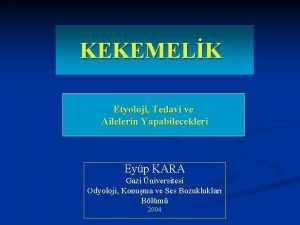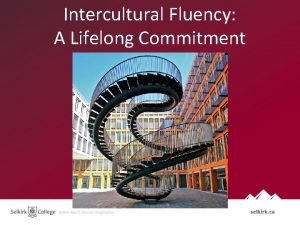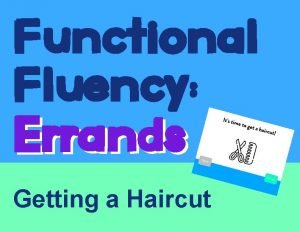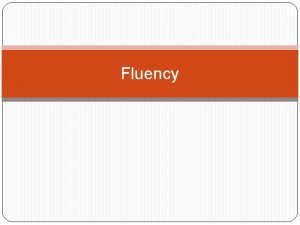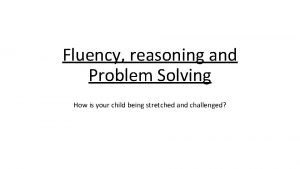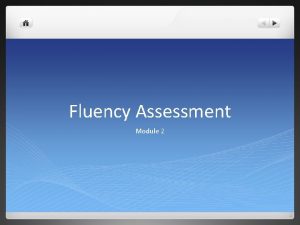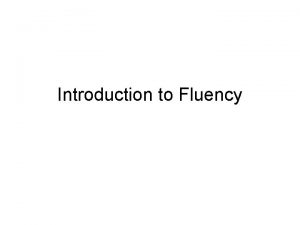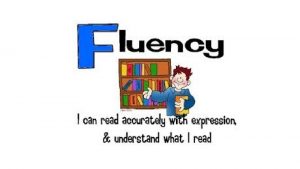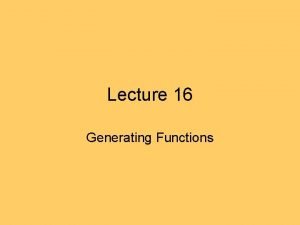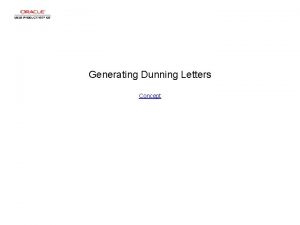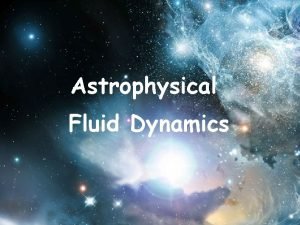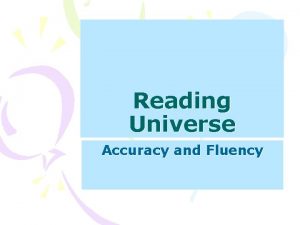The Astrophysical Fluency Project A Framework for Generating



















- Slides: 19

The Astrophysical Fluency Project: A Framework for Generating Fluency-Inspiring Opportunities Rica Sirbaugh French (Mira. Costa College + Center for Astronomy Education) Edward Prather (University of Arizona + Center for Astronomy Education)

The Data • 353 multiple-choice questions • used in Think-Pair-Share (TPS) or Peer Instruction (PI) • created by faculty in professional development workshops • Center for Astronomy Education Teaching Excellence Workshops • 41 workshops from 2005 -2015 • 293 questions Earth-Sun-Moon Renaissance Astronomy Solar System Light Stars Exoplanets & Life in the Universe • Galaxies & Cosmology • • •

The Data • 353 multiple-choice questions • used in Think-Pair-Share (TPS) or Peer Instruction (PI) • created by faculty in professional development workshops • Center for Astronomy Education Teaching Excellence Workshops • 41 workshops from 2005 -2015 • 293 questions Earth-Sun-Moon Renaissance Astronomy Solar System Light Stars Exoplanets & Life in the Universe • Galaxies & Cosmology • • •

The Data • 353 multiple-choice questions • used in Think-Pair-Share (TPS) or Peer Instruction (PI) • created by faculty in professional development workshops • Center for Astronomy Education Teaching Excellence Workshops • 41 workshops from 2005 -2015 • 293 questions • AAPT/APS/AAS Workshops for New Faculty in Physics and Astronomy • 4 workshops from 2015 -2017 • 60 questions Earth-Sun-Moon Renaissance Astronomy Solar System Light Stars Exoplanets & Life in the Universe • Galaxies & Cosmology • • •

The Data • 353 multiple-choice questions • used in Think-Pair-Share (TPS) or Peer Instruction (PI) • created by faculty in professional development workshops • Center for Astronomy Education Teaching Excellence Workshops • 41 workshops from 2005 -2015 • 293 questions • AAPT/APS/AAS Workshops for New Faculty in Physics and Astronomy • 4 workshops from 2015 -2017 • 60 questions Earth-Sun-Moon Renaissance Astronomy Solar System Light Stars Exoplanets & Life in the Universe • Galaxies & Cosmology • • •

Research Progression: • initially: determine the characteristics of the questions in the data set 1. What kinds and how many different ways of conveying information are used in the question? ü “representations” 2. What kinds and how many different cognitive exercises must the learner engage in to answer the question? ü “intellectual tasks” 3. How rich of a conversation would this question promote among learners attempting to explain and defend their answers? ü “Question Complexity Rubric (QCR)” Ø Develop framework to systematically characterize and catalog the diversity of representations and intellectual tasks and identify levels of complexity.

Representations: ways that information is conveyed 1. words a. b. written spoken 2. pictures & diagrams a. b. c. d. 3. 4. 5. 6. photographs static images figures sketches graphs & charts tables mathematical formalism numbers 7. animations & simulations a. b. moving pictures and/or diagrams with no user interaction simulators with user interaction mechanism(s) 8. recordings of reality a. b. video audio 9. gestures (real-time) a. b. facial expressions body movements

Intellectual Tasks: cognitive exercises the learner engages in 1. 2. 3. 4. 5. 6. 7. 8. visualize draw/sketch model compare identify predict extrapolate count 9. 10. 11. 12. 13. 14. 15. rank sort match quantitative reasoning calculate apply/analyze write

Question Complexity Rubric (QCR): richness of the conversation among learners defending the answer

Research Progression: • progression: recognize a lack of high-complexity questions overall and that some, but not all topics are missing particular representations and/or intellectual tasks Ø Identify variables missing from different topics. Ø Are we even using the representations that offer the right affordances for developing fluency in that topic? Ø Generate new questions to fill gaps. Ø Generate questions that combine representations and tasks in ways not seen in the data.

Research Progression: • currently: our framework goes much deeper than the levels we’ve seen and used so far • The framework has helped us learn how to create high-level QCR questions for different topics. Ø Exploit the framework to systematically do all of the previous things and help us create new pathways of intellectual engagement for moving learners toward fluency. Ø Explore potential for more pedagogically powerful questions.

From simpler to more complex

From simpler to more complex n o i t s ue q g n ri i p s n -i y c n Flue

From simpler to more complex Fluency-inspiring questions • require learners to extract information from and transfer it between multiple different representations, • engage learners in multiple intellectually rigorous tasks, and • promote complex discourse to justify an answer.

From simpler to more complex n o i t s ue q g n ri i p s n -i y c n Flue

From simpler to more complex n o i t s ue q g n ri i p s n -i y c n Flue

From simpler to more complex n o i t s ue q g n ri i p s n -i y c n Flue

Conclusions Immediate implications: use the framework like a tool. • Systematic way to characterize and catalog the representations, tasks, and levels of complexity in multiple-choice TPS/PI questions. • For particular topics, identify gaps in usage of particular representations and tasks. • Generate new questions to fill those gaps. • Generate fluency-inspiring questions Deeper implications: the framework is not simply a tool for making new questions! It is truly generative in that it § informs how we think about our disciplines and § provides pathways for exploring and creating more pedagogically interesting and powerful opportunities ( fluencyinspiring opportunities) opportunities for learners to unpack complex concepts, practice critical discernment, and develop fluency. It is easily extended to other types of instructional materials, methods, and disciplines.

Happy Halloween!
 Arcetri astrophysical observatory
Arcetri astrophysical observatory Astrophysical journal keywords
Astrophysical journal keywords Acquisition fluency maintenance generalization
Acquisition fluency maintenance generalization Speech emergence examples
Speech emergence examples Sentence fluency is
Sentence fluency is Woodcock johnson 4
Woodcock johnson 4 Definition of reading fluency
Definition of reading fluency Six dimensions fluency rubric
Six dimensions fluency rubric Confirmation and fluency stage
Confirmation and fluency stage Precision fluency shaping program review
Precision fluency shaping program review Reading rate by grade level
Reading rate by grade level Van riper tekniği pdf
Van riper tekniği pdf Intercultural fluency
Intercultural fluency Functional fluency
Functional fluency Fluency with information technology
Fluency with information technology What is fluencing
What is fluencing Problem reasoning
Problem reasoning Reading fluency checklist
Reading fluency checklist Fluency friday
Fluency friday Cbm reading fluency passages
Cbm reading fluency passages
